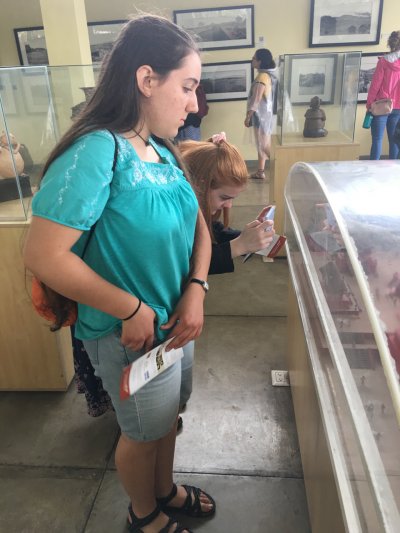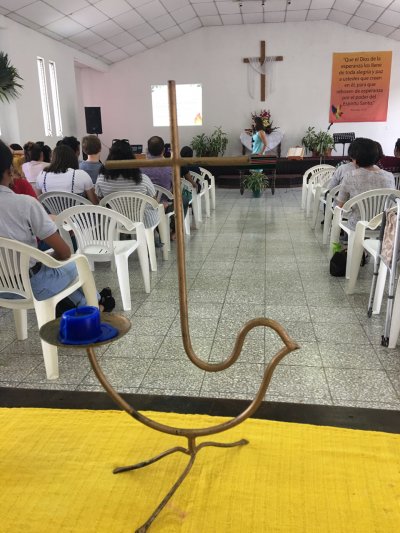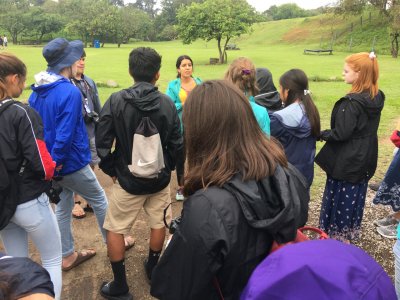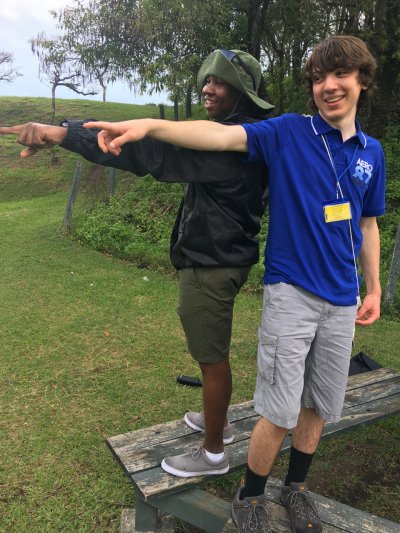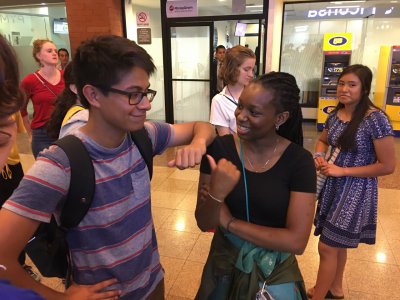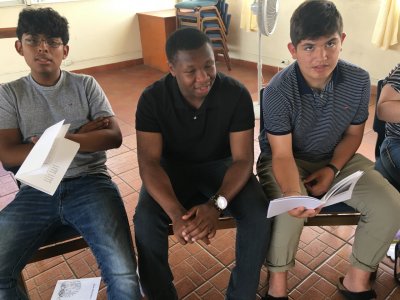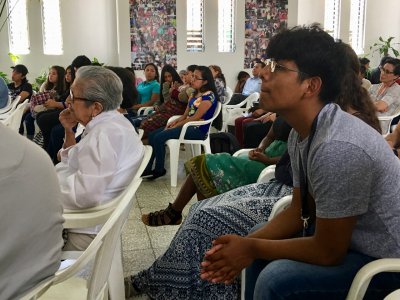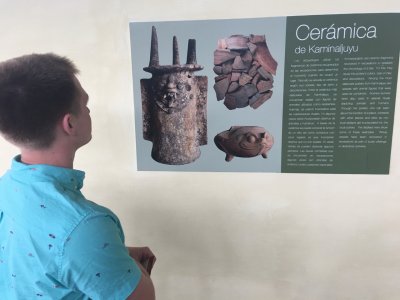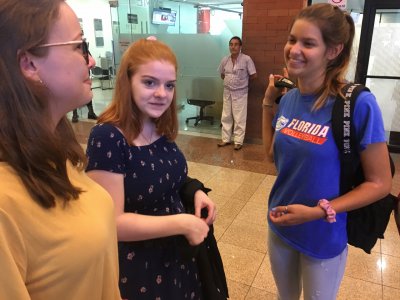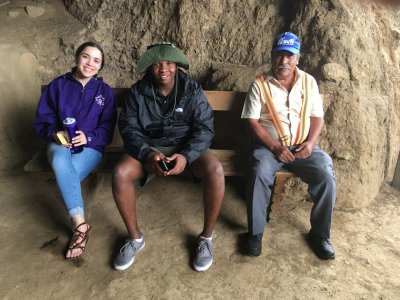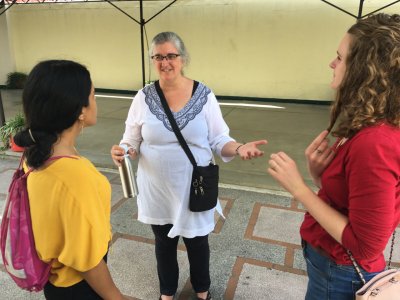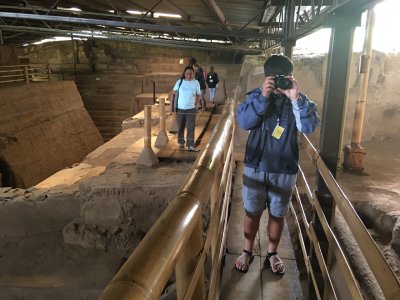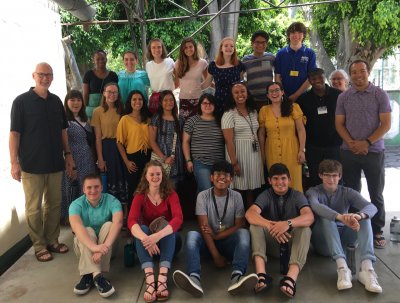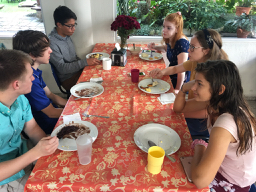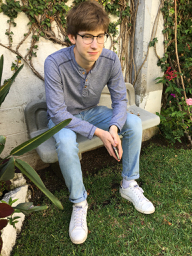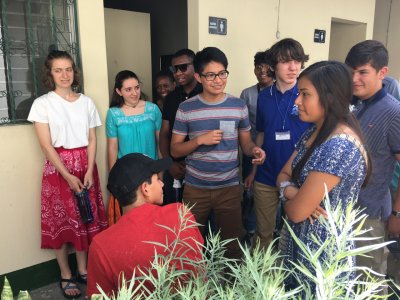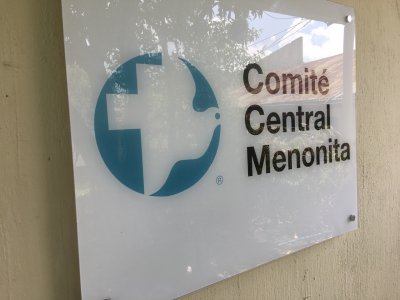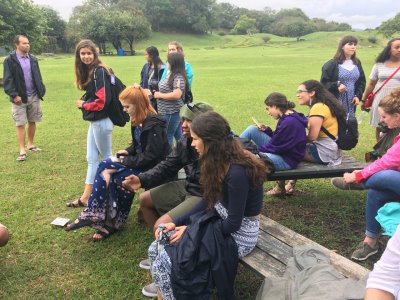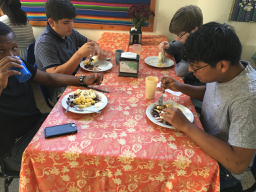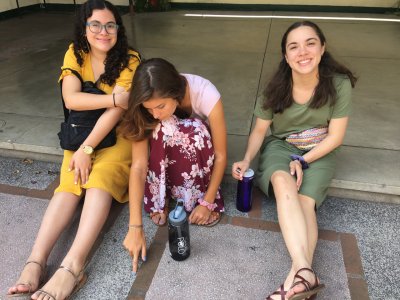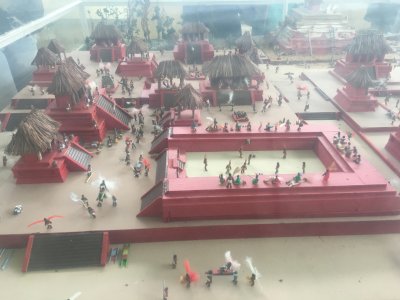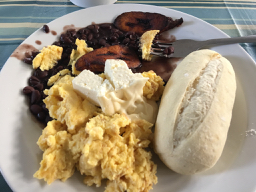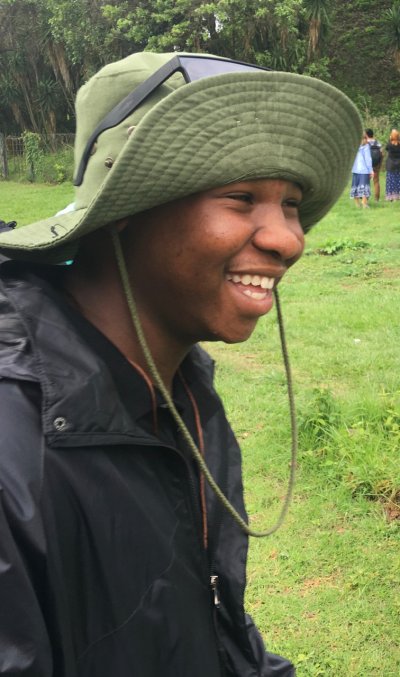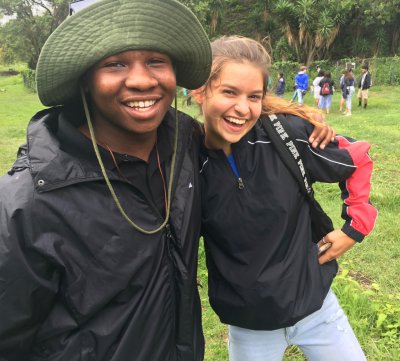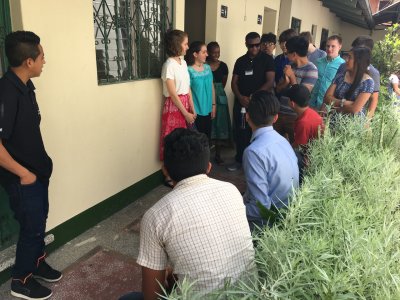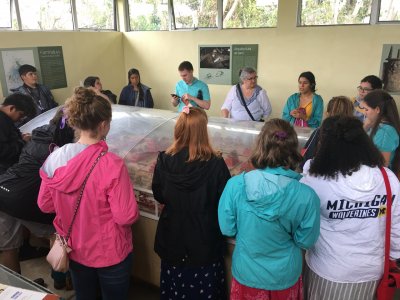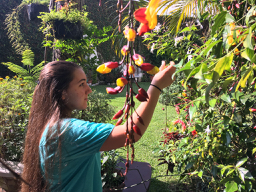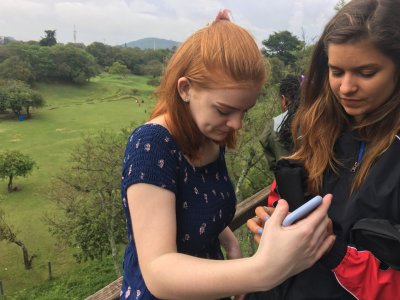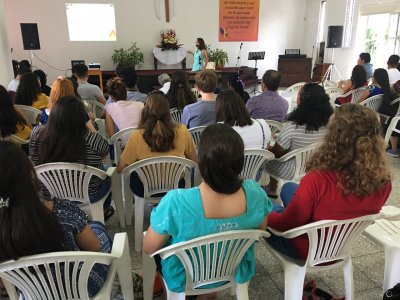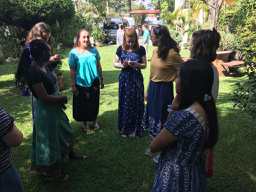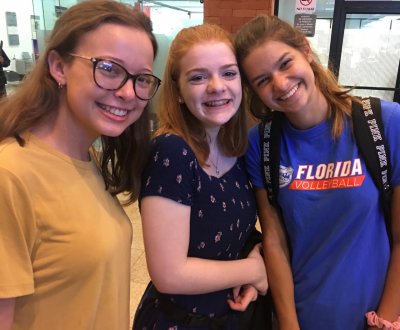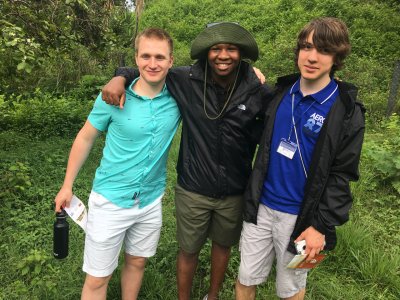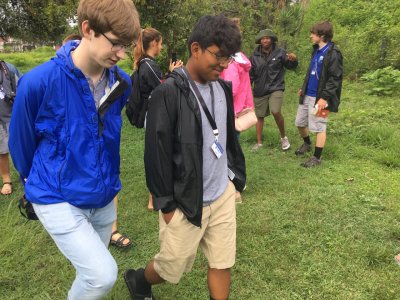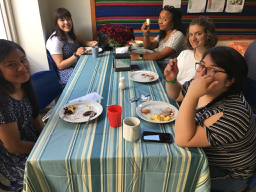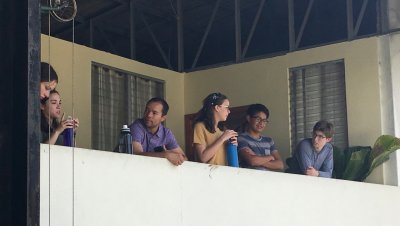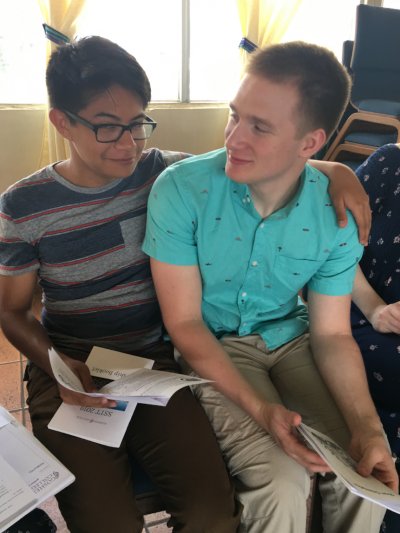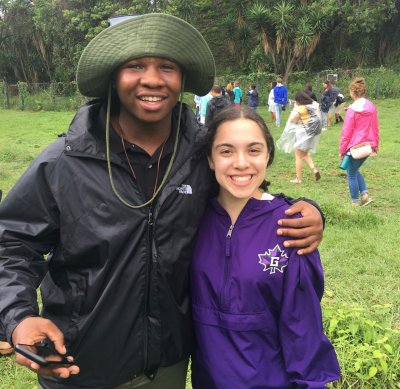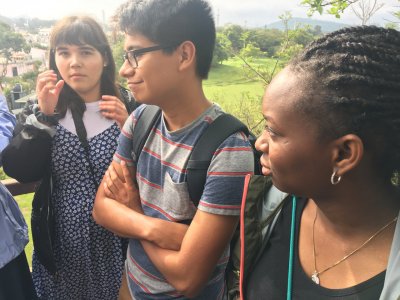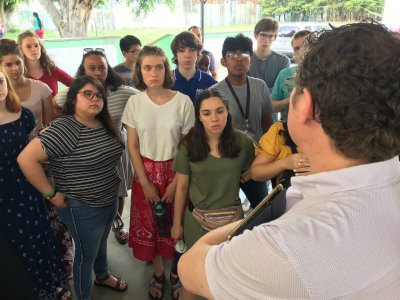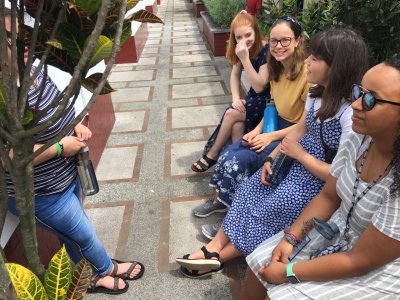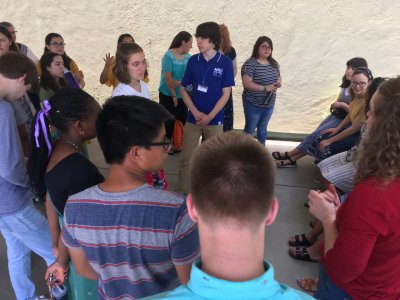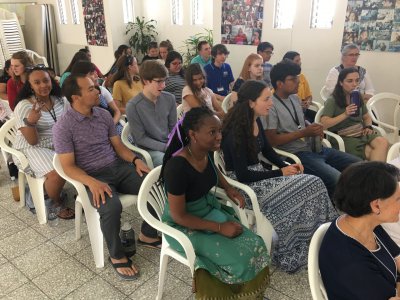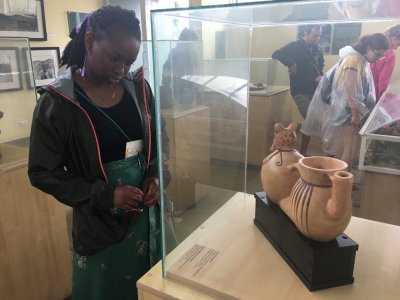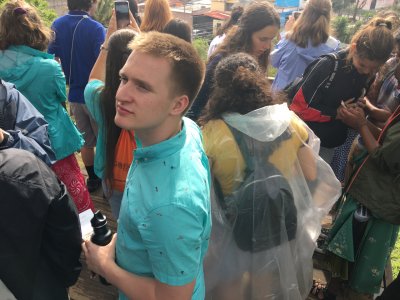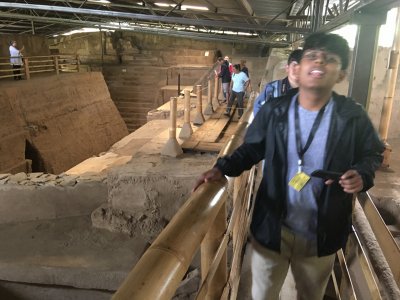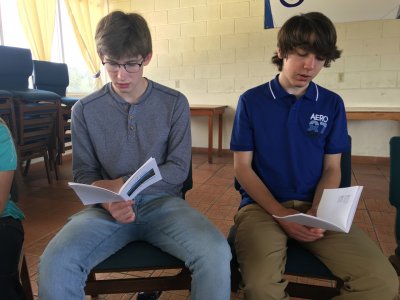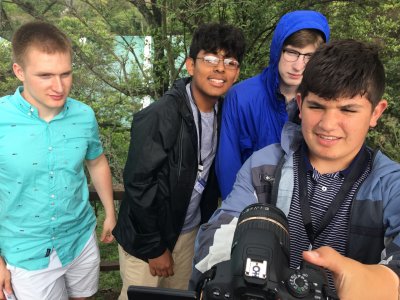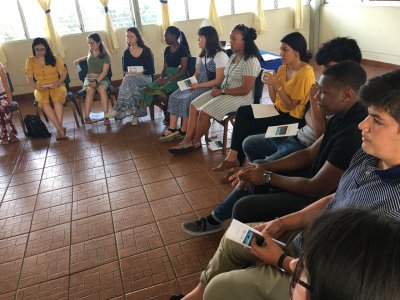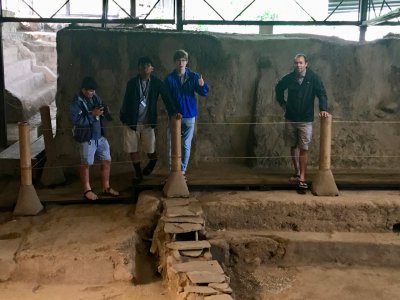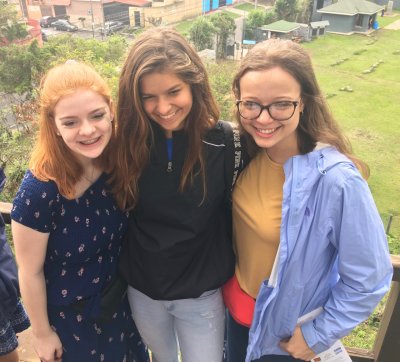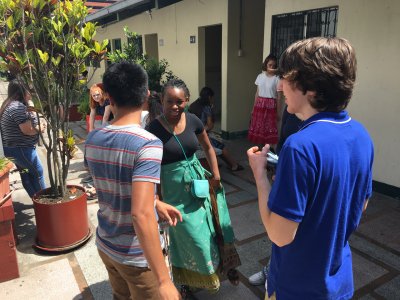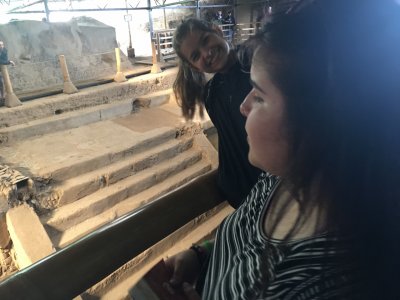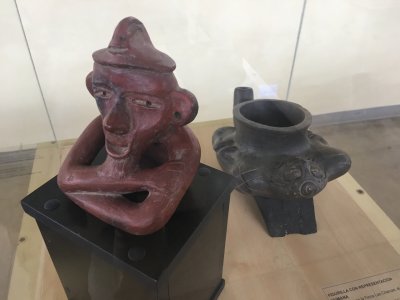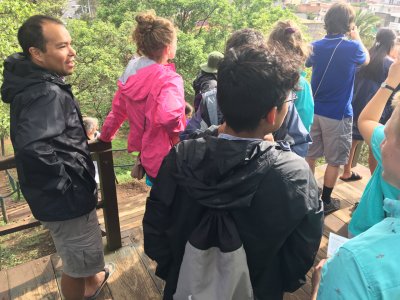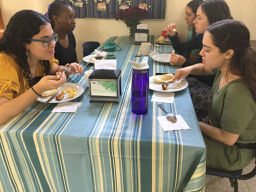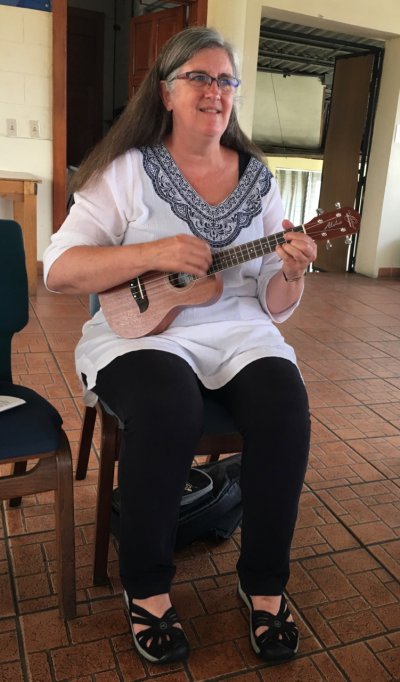Christian and Maya Perspectives on Creation Care
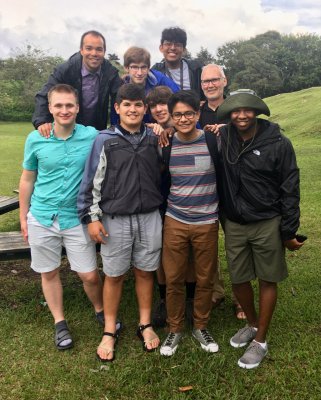
Most of our group secured about six hours of sleep before rising for what I (Keith) think is the best breakfast anywhere in the world: scrambled eggs, farmer’s cheese, mayonnaise, black beans, and bread (or tortillas). Andrea led us in orientation afterward, and we then continued our practice of Centering Prayer (we are up to six minutes of silence now) with Gwen before heading off to Casa Horeb, the nearby Mennonite congregation. Today’s sermon was a bit unusual, we understand, with a guest speaker addressing Creation Care, contrasting the more traditional understanding of a forthcoming “new heaven and new earth” with a more recent vision for a “restored heaven and earth,” which requires our attention and care of creation. The service was all in Spanish, which was new for many students.
We ended our structured activities today by going to the archaeological site Kaminaljuyu, just a short distance from the SEMILLA campus. At its height nearly 1000 years ago, the buildings extended over five square kilometers with more than 200 mounds. Kaminaljuyu is a sacred locale where rituals were practiced to communicate with the Lord of Creation, with Maya ceremonies of thanks, petition and commemoration taking place. It was wonderful to bracket the day with both indigenous attention and Christian attention to creation. One student said this morning, “Wow, this is so totally transformative.” I said, “That’s pretty impressive. We’ve only been here 12 hours.” We do hope our experience in Guatemala is formative and transformative for these remarkable young people.
At Kaminaljuyu, we also saw flower shrines beneath some of the ceiba trees; according to the Maya cosmovision, the ceiba represents distinct levels of the world: the branches represent the 13 levels of the heavens, its roots represent the 9 levels of the underworld, and the surface represents the earthly level.
Between church and Kaminaljuyu, we returned to CASAS for lunch and then went to the Miraflores Mall to exchange money. We’re preparing for dinner now, with some students reflecting in their Daily Journal about today’s events. We’ll finish the evening with dinner and then a short time for worship and processing.
Tomorrow we’ll spend most of the day on campus, hearing from Andrea, director of CASAS, and several guest speakers as we begin our sessions on “Youth and the Fullness of Humanity.” Thanks for joining us on the journey.
